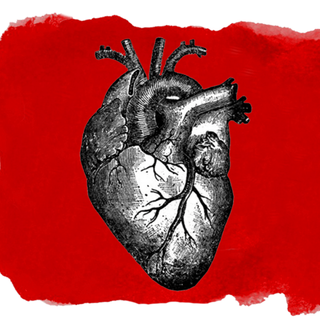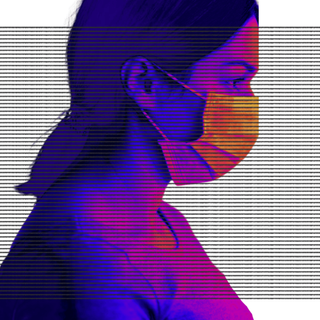
Why the Exhausting Endurance of the ‘Tortured Artist’ Syndrome Must End
The notion that trauma influences creativity is still around, but it often fails to acknowledge that the influence can be negative too.

The trope of the “tortured artist”— a creative, but traumatized genius — has been around for years. Imtiaz Ali’s Rockstar exemplified this idea for modern-day Indian moviegoers when the protagonist’s mentor advised him that to become a great artist, he must “experience in great depths one particular emotion, pain“; this led him to actively seek out emotional damage.
But seeking trauma is, of course, immensely disrespectful to people struggling to cope with the aftermath of trauma, without ever having wished for it or romanticized it — making their experience sound aspirational by reducing trauma to nothing more than a catalyst for art. In addition, it can also have destructive consequences on the mental health of the trauma-seeker.
While Ranbir Kapoor’s character in Rockstar did succeed in attaining the fame he so badly sought, the trauma he underwent neither allowed him to enjoy his musical career nor his personal life. By his own admission at the end of the movie, he wished he never had his heart broken in the first place.
Vincent Van Gogh’s mental illnesses are also often romanticized to further the stereotype of the tortured genius. In reality, he said of the impact of his mental health on his creative career, “Oh, if I could have worked without this accursed disease.. what things I might have done.” Unable to cope with his emotional turmoil, Van Gogh shot himself.
Other real-life embodiments of the tortured artist trope, from Sylvia Plath to Ernest Hemingway to Kurt Cobain, also met with a similar fate. Did they make great art? Undoubtedly. But was their poor mental health the driving force behind it? Not only is such an assumption unfounded, but it also glosses over their struggles with their deteriorating mental health that ended their lives, along with their chances at longer, flourishing careers.
In fact, the “most productive period” of Van Gogh’s career overlapped with the time he was undergoing treatment for his mental health. Not only did he make about 150 paintings in one year during this time, but also created some of his most famous works, including Starry Night.
So was it really trauma that spurred his art or his recovery from it?
Related on The Swaddle:
Why Art, Music Give You Skingasms
“Post trauma, when a person introspects, or reflects on their experiences, they may have a new-found meaning of life, which can lead to a surge in creativity,” says Samriti Makkar Midha, a Mumbai-based psychotherapist. However, experiencing trauma neither makes creativity an obvious next step, nor a likely one. The way one reacts to trauma can vary from person to person.
R&B artist Adria Kain, for example, said in 2018 that she creates her best work in her “darkest moments”. But adds, “I don’t think that I’m incapable of creating amazing work if I’m [having] a light moment.”
However, people continue to associate creativity as a byproduct of suffering. John Greene, a bestselling author who struggles with anxiety and obsessive-compulsive disorder, recounted a time when he went off his medication, hoping to jump-start his creativity. It didn’t work. “I c[ould]n’t think straight — I c[ould] only think in swirls and scribbles,” he told The New York Times.
And yet, the notion endures.
A 2015 study found “creative” people were 17% more likely to carry genetic variants for bipolar disorder and schizophrenia. Another study from 2012 had found that people in creative professions, and especially writers, had an 8% higher likelihood of living with bipolar disorder. While experiencing trauma does hold the potential to contribute to both of these conditions, these studies suggest that the correlation between poor mental health and creativity is genetic — and so, beyond the control of anyone to really manipulate it to become creative.
“I believe that to write great poetry one must put themselves in a state of discomfort,” Shantanu Anand, a poet and storyteller, told us. Tragedy can, “by definition, make way for discomfort,” he explains. However, it is not an essential ingredient for the discomfort, and “chasing tragedy can be extremely toxic.” Instead, the act of being vulnerable, by opening oneself to up feel the spectrum of emotions — be it joy, sorrow, loneliness, excitement, enthusiasm — more fully, is not comfortable either, and can motivate one to create. Just like tragedy can act as a “strong motivator,” euphoria can, too, he notes.
Away from movies, when real people express their real-life traumatic experiences through art, “they don’t necessarily care about the objective quality of the art they’re producing, they care most about expressing themselves,” says Anand. “It’s great art not because it was intended to be so, but because the creator was honest about their experience. It was raw, it was real, and came from a place of deep, deep truth,” he says. “Great art comes from vulnerability and honesty and there’s nothing authentic about chasing trauma, and manufacturing experiences.”
Related on The Swaddle:
Women’s Representation in Art, Music Reduced Under Lockdown Due to Digital Divide: UNESCO
Experts believe that by allowing people to express what they’re feeling without having to use words can support recovery from mental health conditions. The helpfulness of creative expression in managing one’s emotional health is precisely the reason why art is used as a form of therapy by professionals to treat a range of mental health conditions, including post-traumatic stress disorder (PTSD).
Artist Indu Harikumar, whose vast body of work includes depictions of traumatic experiences like intimate violence and abortion, says, “I find it therapeutic to draw about traumatic experiences because it’s like a[n emotional] release. It [is] as if I [am] creating a new world through my art; a world I could control. But that’s not the only kind of artwork I enjoy.” Harikumar’s insights speak to the value of art as a means to heal from trauma and not as an aftermath of traumatic experiences. Creative expression may be a choice made by a survivor, rather than an automatic switch flipped by trauma.
Moreover, Midha explains that while a traumatic experience may spur one’s creativity, another traumatic experience can shut the same individual down — leading them to “withdraw into a shell, and not be able to function, preventing creativity from flowing.” Essentially, the interplay between trauma and creativity exists on a spectrum, she adds. The way a specific individual would react to a specific trauma at a specific point in time depends on a permutation and combination of so many factors that it’s difficult to predict the outcome.
She also draws attention to how people often choose art as a more “acceptable” way to talk about experiences that may not find a way in regular, everyday conversation. People are more willing to repeatedly listen to a song about heartbreak, than the creator’s narration of the painful experience that led to the song.
It appears when trauma and creativity do interact with each other, it’s not necessarily in the linear fashion the Rockstar-train would have us believe. Pain doth not make thou a creative genius.
A pointed distinction is that pain can do the opposite of luring your inner creative genius. That is, besides leading to life-threatening emotional damage, pain can block creative production. Doesn’t this warrant a stronger case to cease and desist this romanticism in pop culture?
Let’s look at it this way: Exercising can help people’s with their mental health and well-being; creativity, at times, can help people process terrible experiences. But since exercising exists beyond being just a tool to better one’s mental health, wouldn’t it be absurd to seek a mental illness just so one can be great at exercising? Similarly, creativity, too, exists beyond being a tool to recover from trauma. To suggest that one must seek trauma in order to be creative is beyond counter-intuitive. The trauma-loves-creativity notion reduces self-expression to nothing more than a byproduct of emotional damage when it could be, and often-times is, so much more than that.
As Canadian screenwriter Lindsey Addawoo puts it, “We, as artists, give suffering so much credit for our work… It isn’t a fair argument to reduce art to nothing more than a physical manifestation of bad mental health.”
Devrupa Rakshit is an Associate Editor at The Swaddle. She is a lawyer by education, a poet by accident, a painter by shaukh, and autistic by birth. You can find her on Instagram @devruparakshit.
Related


Despite More Women Dying From Heart Disease, They Are Excluded From Research
